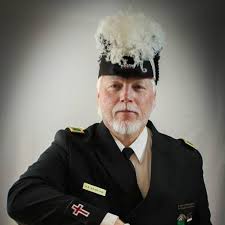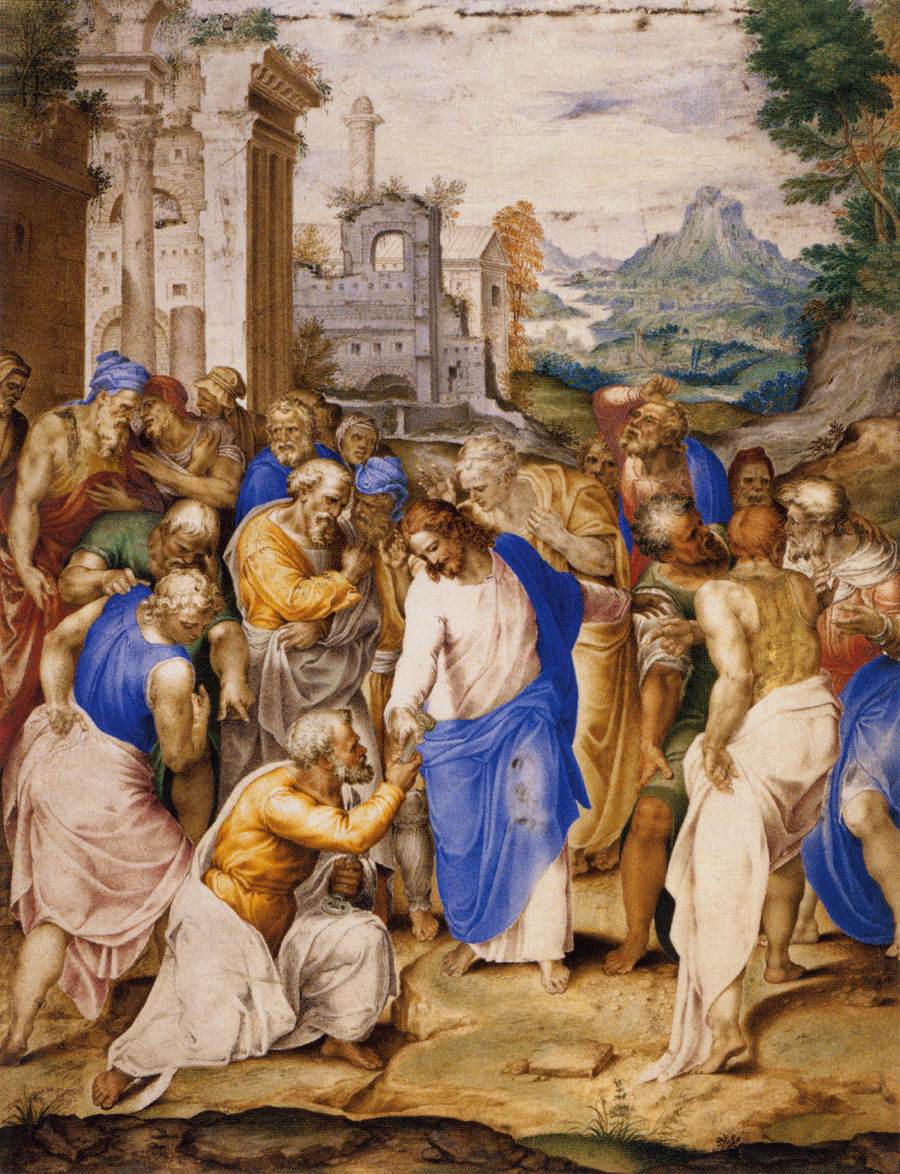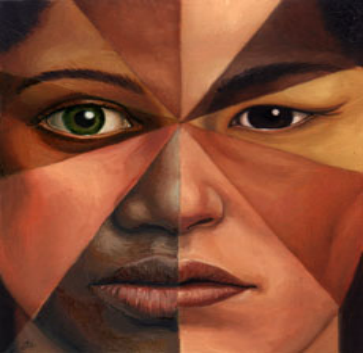(By Freemason, Gnostic and author, Hank Kraychir) – In my personal quest to discover as much about English Masonic history as I can, I came across a book written by Reverend George Oliver, it’s called, Masonic Library, the Antiquities of Freemasonry (1854). Within the book, I found a chronological list of Grand Masters and Patrons of Masonry in England, which just so happened to date it back to 557 AD ~ an important date I had written about earlier.

Sadly, I have heard it time and time again that there is no proof that Masonry existed prior to the era of 1717; that it is only a folklore narrative. Well, I think I found some more pretty compelling data to help bolster my position, which is listed below.
In the following chronological list, I specified the quote first, which is highlighted with a link about the Grand Master or Patron; and many times, when I found supporting information from another source, often from a non-Masonic source, I added another link right under it. Feel free to follow these links, which has additional and supporting data to ponder about historic English Masonry and the individual mentioned. I also did not add any supporting links after the 1717 period, only because the issue at hand is did Masonry exist in England prior to that date, not after it.
And here it is, a well prepared chronological list of past English Grand Masters and Patrons from 557 AD to 1843 AD, which started on page ix and ended on page xi in the preface section of Reverend George Oliver’s 1854 book, Masonic Library, the Antiquities of Freemasonry:
The following chronological list of Grand Masters and Patrons, from the time of the Anglo-Saxons, will be a decisive testimony that the order contains nothing repugnant to civil or religious liberty:
557 Austin the monk.
(Ed. Note: follow link, “Augustine… distinguished himself by being at the head of the fraternity…”)
(Ed. Note: According to Francis Drake, Edwin, the first Christian King of the Nortbumbers formed Britain’s first Grand Lodge sometime between 617 and 633 AD; and was its Grand Master).
(Ed. Note: follow link, “under the direction of Bennet, Abbot of Wirral, who was appointed superintendent of the masons by Kinred, King of Mercia. From this time, however, little is known of the fraternity, until the year 856, when St. Swithin was the superintendent, appointed by Ethelwolf; from which time it gradually improved till the year 872, when King Alfred took the command of it.”)
836 St. Swithin.
(Ed Note: follow link, “St. Swithin was Grand Master…”)
872 King Alfred.
(Ed. Note: follow link, “King Alfred had about him the belt Architects, and employed the fellow-crafts wholly in brick and stone… p. 83).
900 Ethred, Prince of Mercia.
(Ed. Note: may be misspelled?)
928 Athelstan.
(Ed. Note: follow link, from an 1739 publication, “King Athelstan, the first anointed king of England, made his brother Edwin Grand Master…)
957 Dunstan, Archbishop of Canterbury.
(Ed. Note: follow link, “Dunstan was Grand Master of the fraternity of free and accepted Masons in England.”)
1041 Edward the Confessor.
(Ed. Note: follow link, “a patron of Masonry in England in 1041.”)
1066 Gondulph, Bishop of Rochester.
(Ed. Note: follow link, “William the Conqueror appointed Gondulph, Bishop of Rochester, to preside over the society.”)
1100 Henry I.
(Ed. Note: follow link, “Grand Master… Henry I next succeeded, and in 1135 Westminister, now the House of Commons was built.”)
1135 Gilbert de Clare, Marquis of Pembroke.
(Ed. Note: follow link, “The president of the lodges being Gilbert de Clare, Marquis of Pembroke.”)
1155 The Grand Master of the Templars.
(Ed. Note: Richard de Hastings was Master of England)
1199 Peter de Colechurch.
(Ed. Note: follow link, “and Peter de Colechurch was then appointed Grand Master.”)
1216 Peter de Rupibus, Bishop of Winchester.
(Ed. Note: Peter des Roches? follow link, “Peter de Rupibus, succeeded as grand master, and Geoffrey Fitz-Peter, chief surveyor of the King’s works, acted as deputy under him.”)
1272 Walter Gilford, Archbishop of York.
(Ed. Note: follow link, “when Walter Gilford, Archbishop of York, was grand master.”)
1307 Walter Stapleton, Bishop of Exeter.
(Ed. Note: follow link, “under Walter Stapleton, Bishop of Exeter, who had been elected grand master in 1307.”
1327 Edward III.
(Ed. Note: follow link, “Edward III, not only patronized the masons, but studied the constitutions of the order, revised the ancient charges, and added several regulations to the original code.”
1357 William a Wykeham, Bishop of Winchester.
(Ed. Note: follow link, “William a Wykeham was elected grand master…”)
1375 Simon Langham, Abbot of Westminster.
(Ed. Note: follow link, “called the king’s Free-mason, Simon Langham…)
1377 William a Wykeham, again.
(Ed. Note: follow link, “William a Wykeham was elected grand master…”)
1400 Thomas Fitz Allen, Earl of Surrey.
(Ed. Note: follow link, “He appointed Thomas Fitz Allen, Earl of Surrey, as grand master.”)
1413 Henry Chichely, Archbishop of Canterbury.
(Ed. Note:, follow link, “On the accession of Henry V, the fraternity were governed by Henry Chichely, Archbishop of Canter…”
1443 William Waynfleet, Bishop of Winchester.
(Ed. Note: follow link, “Henry VI. initiated into Masonry in the year 1442, but the King himself presided over Lodges, and, moreover, the King nominated William Waynfleet, Bishop of Winchester, for Grand Master.”)
1471 Richard Beauchamp, Bishop of Salisbury.
(Ed. Note: follow link, “The fraternity prospered till the commencement of the wars of York and Lancaster, but from that time declined. It however rose again under Richard Beauchamp, Bishop of Salisbury, Grand Master.)
1500 The Grand Master of the order of St. John. Henry VII Patron.
(Ed. Note: follow link, “who assembled their Grand Lodge in 1500, and chose Henry for their protector.”
1502 Henry VII.
(Ed. Note: follow link, “24th June, henry VII. presided as grand master at a lodge held in his palace…”
1515 Cardinal Wolsey.
(Ed. Note: follow link, “On the accession of Henry VIII. Cardinal Wolsey was appointed grand-master…”)
1530 Thomas Cromwell, Earl of Essex.
(Ed. Note: follow link, “Wolfey was succeeded as grand master in 1534 by Thomas Cromwell, Earl of Essex…”
1543 John Touchett, Lord Audley.
(Ed. Note: follow link, “Cromwell being beheaded in 1540, John Touchett… succeeded to office of grand-master, and built Magdalen college, in Cambridge, and many other structures.”)
1549 Edward Seymour, Duke of Somerset.
(Ed. Note: follow link, “Edward Seymour, Duke of Somerset. Grand Master 1549.”
1552 John Poynet, Bishop of Winchester.
(Ed. Note: follow link, “In 1552, John Poynet, Bishop of Winchester, became the patron of the institution…”)
1560 Sir Thomas Sackville.
(Ed. Note: follow link, “In this year Sir Thomas Sackville resigned the office of Grand Master of the Freemasons.”)
1567 Sir Thomas Gresham, in the South.
(Ed. Note: notice the word “South.” This is meant to signify two Grand Masters).
1567 Francis Russell, Earl of Bedford, in the North.
(Ed. Note: notice the word “North.” This is meant to signify two Grand Masters).
1580 Charles Howard, Earl of Effingham.
(Ed. Note: follow link, “Charles Howard, Earl of Effingham, who continued to preside over the lodges…”)
1588 George Hastings, Earl of Huntingdon.
(Ed. Note: follow link, “George Hastings, Earl of Huntingdon, was chosen grand-master…”)
1603 King James I, Patron
(Ed. Note: follow link, “it was at the same time patronized, the sister kingdom, by King James I. By the authority of this monarch, every Grand Master who was chosen by the brethren, either from the nobility or clergy, and approved of by the crown was entitled to an annual revenue of…”)
– Inigo Jones, Grand Master
(Ed. Note: follow link, “He was named Grand Master of England, and was deputed by the King to preside over the lodges.”)
1618 William Herbert, Earl of Pembroke.
(Ed Note: follow link, “William Herbert, Earl of Pembroke, grand master of the household of Queen Elizabeth.”
1625 King Charles I.
(Ed. Note, follow link, “King James the first… to be hereditary Grand Master of the order.”)
1630 Henry Danvers, Earl of Danby.
(Ed. Note: follow link, “office of grand master… till the year 1630, when he resigned in favour of Henry Danvers, Earl of Danby.”)
1633 Thomas Howard, Earl of Arundel.
(Ed. Note: follow link, “grand master… who was succeeded in 1633 by Thomas Howard, Earl of Arundel…”).
1635 Francis Russell, Earl of Bedford.
(Ed. Note: follow link, “was chosen grand master, and was succeeded in AD 1635, by Francis Russell, Earl of Bedford…”)
1636 Inigo Jones, again.
(Ed. Note: follow link, “He was named Grand Master of England, and was deputed by the King to preside over the lodges.”)
1643 Henry Jermyn, Earl of St. Albans.
(Ed. Note: follow link, “Henry Jermyn, Earl of St. Albans was elected Grand Master…”)
1666 Thomas Savage, Earl of Rivers.
(Ed. Note: follow link, “A.D. 1666, Thomas Savage, Earl of Rivers, succeeded the Earl of St. Albans as Grand Master…”
1674 George Villiers, Duke of Buckingham.
(Ed. Note: follow link, “In 1674, Earl of Rivers resigned the office of grand-master in favour of George Villiers, Duke of Buckingham…”)
1679 Henry Bennet, Earl of Arlington.
(Ed. Note: follow link, “and he by Henry Bennet, Earl of Arlington…”). This book was published in 1739.
1685 Sir Christopher Wren.
(Ed. Note: follow link, “Sir Christopher Wren was elected to the office of grandmaster…”)
1698 Charles Lenox, Duke of Richmond.
(Ed. Note: follow link, “Many of the nobility also were present at a general assembly and feast held in 1697: particularly Charles, Duke of Richmond and Lenox, who was elected grand master for the year…”)
– Sir Christopher Wren, again.
(Ed. Note: follow link, “Sir Christopher Wren was elected to the office of grandmaster…”)
NO NEED TO ADD ANY FURTHER RESEARCH PAST THIS DATE IN ORDER TO CONFIRM MASONRY EXISTED PRIOR TO 1717:
1717 Anthony Sayer, Esq.
1718 George Payne, Esq.
1719 Dr. Desaguliers.
1720 George Payne, Esq., again.
1721 John, Duke of Montagu.
1722 Philip, Duke of Wharton.
1723 The Duke of Buccleugh.
1724 The Duke of Richmond.
1725 The Earl of Abercorn.
1726 William O’Brien, Earl of Incbiquia.
1727 Lord Coleraine.
1728 Lord Kingston.
1729 Thomas Howard, Duke of Norfolk.
1731 Lord Lovel.
1732 Anthony Brown, Viscount Montacute.
1733 The Earl of Strathmore.
1734 The Earl of Crawford.
1735 Thomas Thynne. Viscount Weymouth.
1736 John Cambell, Earl of Loudon.
1738 H. Brydgeg, Marquis of Carnarvon.
1739 Lord Raymond.
1740 The Earl of Kinton.
1741 The Earl of Morton.
1742 John Ward, Lord Dudley and Ward.
1745 James, Lord Cranstown.
1747 Lord Byron.
1752 John, Lord Carysfort.
1754 Marquis of Carnarvon, again.
1757 Sholto, Lord Aberdour.
1762 Washington Shirley, Earl Ferrers.
1764 Lord Blaney.
1767 Henry, Duke of Beaufort.
1772 Robert Edward. Lord Petre.
1777 George, Duke of Manchester.
1782 H.R.H. Frederick, Duke of Cumberland.
1700 H.R.H. George, Prince of Wales.
1813 H.R.H. Augustus Frederic, Duke of Sussex, at the Union
1843 The Earl of Zetland, Acting
By the way, the above chronological list is supported by an earlier publication from 1767, The Constitutions of the Ancient and Honourable Fraternity of Free and Accepted Masons ~ sound familiar? It should, it’s the constitution the Ancient Free and Accepted Masons used in England during the 18th century. This list can also be found in an even earlier publication, The Complete Free Mason: Or Multa Paucis for Lovers of Secrets, which was originally published four years earlier in 1763. In fact, the earliest publication found that had a similar list came from the 1739 book called, The History of the Works of the Learned, which was written by Jacob Robinson, page 332. 
Therefore, I will add this additional research to my previous posts, First Grand Lodge of England 926 AD, not 1717 AD, and Dating the Foundation of English Masonry to 557 AD, to help bolster the belief that ancient Masonry can be well established if only one is looking for it; rather than simply saying it never existed based on no research, just opinions.
So Mote It Be!!!
Hank Kraychir
Author Credit
 This article is by Freemason, Gnostic and author, Hank Kraychir. The original article can be found on his blog, Gnosis Masonry.
This article is by Freemason, Gnostic and author, Hank Kraychir. The original article can be found on his blog, Gnosis Masonry.
Hank is an accomplished writer of 13 books, a historian, lecturer, Master Mason, York Rite Mason, and a Knight Mason. He typicality writes historical stories about Athletic Legends; although he has also written on the topics of American Education, the American Civil War, and California History. Moreover, he has also written one Masonic themed book, which is called Tales from a Masonic Storyteller (2014). His second Masonic book, Masonry and the Three Little Pigs (2016), will be published next year.

Moe is the founder of GnosticWarrior.com. He is a father, husband, author, martial arts black belt, and an expert in Gnosticism, the occult, and esotericism.





? Who were the first original Free Masons of the Craft?
My research proves it was the Phoenicians who are also known as the Sidonians. Same people who formed the Judaic religions, and secret societies. They would then bring these masonic skills and secrets to England, France, Ireland and the USA etc.